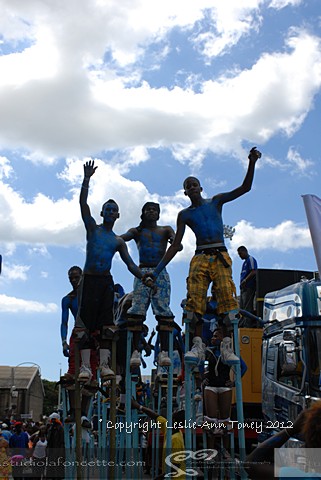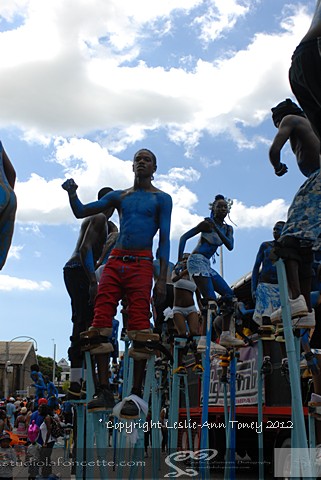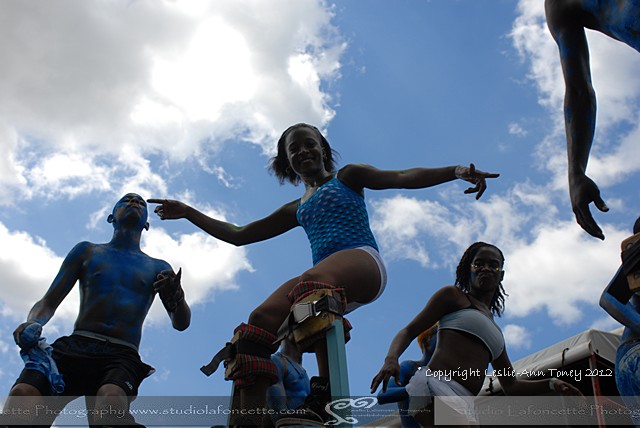
Youth from the Kilimanjaro School for the Arts on Carnival Saturday 2012 in Port-of-Spain, Trinidad
In the words I quoted three years ago,
“Se wo were fi na wosan kofa a yenki.”
Literally translated it means “it is not taboo to go back and fetch what you forgot”.
Sankofa, the Adinkra symbol of the Akan people, from what is known today as Ghana, “teaches us that we must go back to our roots in order to move forward. That is, we should reach back and gather the best of what our past has to teach us, so that we can achieve our full potential as we move forward. Whatever we have lost, forgotten, forgone or been stripped of, can be reclaimed, revived, preserved and perpetuated”.*
If you’d like to know more about that first series, go here.

Moko Jumbies are said to represent the gods, or ancestors.
I give thanks to the Creator Spirit for the opportunity to do this – for the blog space, for the brain space, for the amazing heritage that is Trinidad & Tobago carnival, for the amazing heritage that makes carnival all over Latin America and the Caribbean. I give thanks to the Ancestors, those on whose shoulders we stand in our pretty mas and our every day suits. This festival is about a celebration of survival – of people ripped out of their homes, their ancestral homelands, away from their loved ones. It celebrates those who survived, celebrates and mourns those who perished, and calls out some of the perpetrators of wrong in this world. Importantly, our carnival celebrates our ability to make an amazing costume out of plastic bottles and feed bags, just like our ancestors made some mean dishes out of scraps and seconds, made life out of enslavement, made so many things.

Dance de mas, dance in a fete, get on bad, like yuhself, listen to pan, make a mas, spend yuh money. In the blogosphere, our jouvert starts right here. Dis is carnival. It is as old as we are, tracing back to Gelede, to Egungun and to traditions to the eastern parts of Africa along the Nile. And today we also celebrate that in our respective carnivals we have evolved and created something that is uniquely Trinidadian (or Tobagonian, Grenadian, Vincentian, Brazilian, (New Orlean) American, Bahamian, etc.) but that has a connection to The Motherland and other Motherlands.
Enjoy
L
[wpvideo weEAHOky]
Footage from the Canboulay Riots Re-enactment 2010, Picadilly Greens, East Port-of-Spain, Trinidad
Beautifully said. Carnival 2013 coming. TouchDSky Jumbies coming. Mokos of Rebellion.
Your blogging has taught us to really pay attention and at least get interested in the past. I have learnt a lot. Thank you.